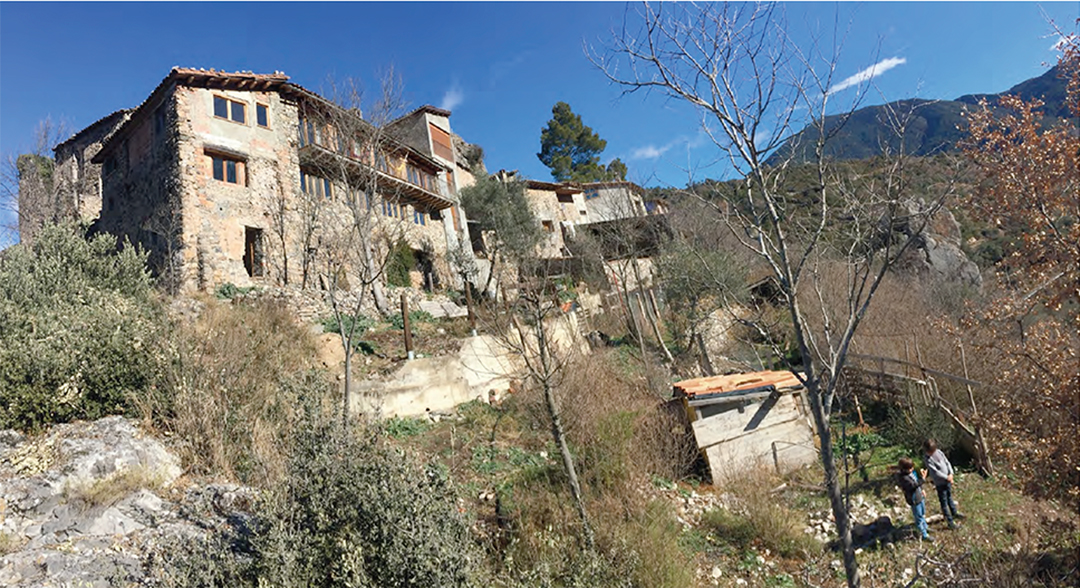First LBC in Europe
The Cal Guerxo building is a prominent project involving the rehabilitation and recovery of abandoned spaces that has become a reference thanks to the obtaining of Living Building Challenge LBC certification, the first in Europe to achieve it, along with LEED Platinum certification. Its design and conception are based on regenerative architecture criteria, developed in a fully collaborative manner, the project was led by its developer and sustainability expert Emmanuel Pauwels with the active participation of a large team of collaborating agents.
We would like to highlight six key aspects of this project:
- Respect for vernacular architecture and planning for future crises, ensuring that there is no negative environmental impact. The project integrates biophilia and permaculture as fundamental principles.
- The land was intentionally restored to create spaces that connect with nature, allowing for gardening, harvesting food, enjoying sauna rituals, soaking in an organic pool, and stimulating biodiversity.
- Priority was given to rounded shapes and materials such as wood, clay, straw and sand were used to create warm textures. These organic shapes and materials generate an atmosphere of peace and positive, vital energy.
- Passive solar design is used for heating, while active collection through the photovoltaic roof generates a 112% energy surplus.
- Rainwater is the only source of water used in the project. The hydrological system of Cal Guerxo is a closed system, consuming only 44 liters per person per day. All wastewater is filtered through an artificial wetland and returned to the land, irrigating fruit trees and vegetables along the way.
- The total carbon footprint of the renovation was reduced to 2,000 kg CO2 by reusing as many materials as possible on site.
Cal Guerxo stands out as a reference project in the rehabilitation and recovery of abandoned spaces, being the first in Europe to obtain the Living Building Challenge LBC certification. Its regenerative design, sustainable energy generation, focus on nature, bio-construction, and active collaboration of diverse agents make it a milestone in sustainable and healthy architecture.








